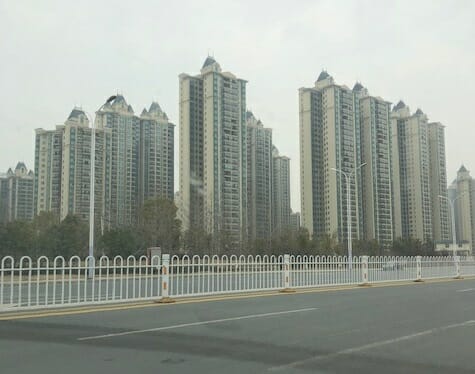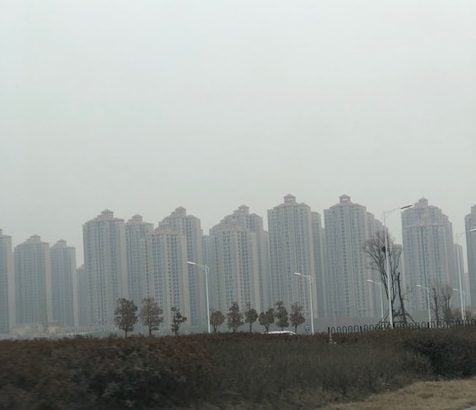
We’ve reported over the past couple years on the slowing China economy. This did not happen in a vacuum. President Trump’s efforts to promote freedom created this scenario.
The Gateway Pundit reported for months that President Trump had the US in the position that it can only win in a deal with China and he did. The US economy was on fire – more Americans wee working than ever before, unemployment was at 50 year lows, wages were way up and the stock market was at record highs. But China was moving in the opposite direction.
As we reported in a post in August 2019 President Trump recognized that China was in an all out war with the US in regards to information and economics. For years Western leaders had done nothing but negotiate into weak positions, never standing up to China’s Communist regime. Former US Presidents treated China like they did Russia 50 years ago, as their superior always giving them what they wanted and never standing up to their abuse and criminal acts.
President Trump knew that China needed the US now more than ever but the US didn’t need China.
Former Trump Chief Strategist Steve Bannon declared that China was in an economic war with the US. He said America was losing until President Trump. Then he added this:
Well here’s the game and right now we are converging on a point and they understand this. We could take the whole thing down. We can take, the whole thing’s built on a house of sand…
If they [China] devalue their currency they are just going to flood more out. They got $3 trillion of reserves and trust me, in a New York second that thing would flood out in a second. That’s what their own people think about their economy. We’ve allowed these guys to push us around. We’ve allowed these guys to take the South China Sea…
This trade war is going to end in victory and what you’re going to see is a reorientation of the entire supply chain out of China…
We knew in May 2019 that just like the US in 2008, a perfect storm was building in China. The excessive and extravagant construction projects, cash-flow challenges and lack of demand in China were all combining to create a financial disaster in China.
Along comes the Trump Administration, the first administration to address China’s unfair trade advantage. The timing of Trump’s tariffs was not good for China as there were more pressing issues that had to be addressed. China had no choice but to go with what the US offered to keep its economy afloat.
Issues with China’s Economy:
1. The more pressing issues for China surround real estate, in a manner similar to the US in 2008. As China grew, it invested in its infrastructure and in addition, it invested in large housing projects throughout the country. These efforts helped bolster China’s already fast growing economy.
The problem is that China over invested in these random properties all over China and these properties today remain empty.
(See below pictures of real estate projects in the middle of China (Hubei Province) – massive but mostly empty – notice the pollution as well.)


There simply are not enough people in the area where these massive complexes were built that make enough money to afford living in these communities.
2. These many properties throughout China sit unoccupied, and there is a cost to this. Bloomberg reported in September 2018 –
Cash-to-short-term debt levels at more than 80 publicly traded real estate companies tracked by Bloomberg were 133 percent on average in the first half, the worst since the first six months of 2015 and down from 297 percent a year earlier. Almost a quarter of developers sport a ratio below 50 percent.
3. In addition, Bloomberg discussed the fears of defaults in China:
But while business has been booming, developers have also been piling on the debt. Firms have been selling more bonds in the domestic market — and at the cheapest rates as investors shrug off default concerns. Those with dollar-denominated obligations, meanwhile, face higher borrowing costs as the U.S. Federal Reserves continues on its tightening path.
4. The amount of debt related to China’s over-development is massive. The total amount is unknown with S&P estimating the amount not reported by local communities and banks being over $6 trillion:
China may be sitting on a hidden debt pile of as much as 40 trillion yuan ($6 trillion), concealed off-balance-sheet by the country’s local governments, according to research from S&P Global Ratings.
Many local governments in China raise debt and hold it off their balance sheet, in order to avoid lending limits imposed by central authorities. S&P says that this is a growing problem within the country, and that the amount of debt held this way has likely ballooned in recent years.
5. The government may have to take over these debts as they become insolvent –
Not only is the level of hidden debt held by local governments in the world’s second largest economy rising, but so too is the risk of those debts being defaulted on. Much of the debt is held by so-called local government financing vehicles (LGFVs), and S&P reports that central government may be willing to let these vehicles file for bankruptcy in the future.
“Default risk of LGFVs is on the rise. China has opened up the possibility of insolvent LGFVs filing for bankruptcy, but managing the default aftermath is a formidable task for top leadership,” the report noted….
The country’s total non-financial sector debt, which includes household, corporate and government debt, will surge to almost 300% of GDP by 2022, up from 242% in 2016. Fears abound that if this debt pile continues to grow, a spectacular blow up could be imminent.
(In Hong Kong in 2019 I spoke with one China CEO who said that a fellow manufacturing CEO in China said the economy there was “terrible”. I also spoke with another head of a manufacturing company in China and he moved his operations to Thailand. He said that there was no more room in Vietnam for his company at a reasonable cost because Vietnam was full as companies which had already moved from China.)
The BBC reported in January 2020 that official China figures were out and the news was scary:
China’s economy grew last year at the slowest pace in almost three decades.
Official figures show that the world’s second largest economy expanded by 6.1% in 2019 from the year before – the worst figure in 29 years.
The country has faced weak domestic demand and the impact of the bitter trade war with the US.
The government has been rolling out measures over the past two years in an attempt to boost growth.
It comes after almost two years of trade tensions with the US – although hopes of a better relationship with America have seen improvements in manufacturing and business confidence data.
It’s doubtful that the Chinese economy even grew in 2019.
President Trump’s Policy and Actions
President Trump created a policy recognizing China was at war with the US, both economic and information warfare was in play.
So President Trump put economic pressure on China, encouraged US companies to move back to the US or to other democratic nations and placed effective tariffs on the goods coming to the US from China. President Trump wanted China to change and begin offering more freedom to its citizens but the CCP has gone the opposite direction. As a result more controls were placed around the regime.
Trump signed a trade deal with Japan. He also put together and signed deals with South Korea and a phase one deal with China. Now it’s reported that Trump is close to a trade deal with India.
These deals are exactly what Bannon discussed in the video above a couple of years ago. President Trump stood up to China and built an economic wall around China that protects the US and other nations in the free world. The US is no longer at China’s mercy, the US is the clear world leader. Two days ago Russia announced that it was halting the sale of S-400 missiles to China. Is this related to Trump as well?
China’s economy is failing. This might be the reason China released the coronavirus – to bring other countries down with it. Time will tell.
President Trump is the first President to stand up for America and address the elephant in the living room – Communist China. Trump’s global policy on China is working.
The post President Trump’s Strategy with Communist China is Working – He’s Building an Alliance of Free Countries Encouraging Communist China to Join Them appeared first on The Gateway Pundit.
